Poland, a captivating country located in Central Europe, boasts a rich cultural heritage, stunning landscapes, and a history marked by resilience and transformation. Known for its picturesque cities, medieval architecture, and vibrant traditions, Poland offers a unique blend of the past and present, making it a fascinating destination for travelers and history enthusiasts alike.
Table of Contents
Geography
Poland spans an area of 312,696 square kilometers and is strategically positioned in Central Europe. It shares borders with Germany to the west, the Czech Republic and Slovakia to the south, Ukraine and Belarus to the east, and Lithuania and the Russian exclave of Kaliningrad to the north. The country’s diverse geographical landscape includes the sandy beaches of the Baltic Sea in the north, the expansive Polish Lowlands in the central region, and the rugged Sudetes and Carpathian mountain ranges in the south. The Vistula River, Poland’s longest river, runs through the heart of the country, contributing to its rich agricultural lands and bustling urban centers.
States of Poland
Poland is divided into 16 administrative provinces called “voivodeships,” not states. Each voivodeship has its own local government and is further subdivided into counties and municipalities. Here is a table listing all 16 voivodeships of Poland along with their capitals:
| No. | Voivodeship | Capital |
|---|---|---|
| 1 | Lower Silesian Voivodeship | Wrocław |
| 2 | Kuyavian-Pomeranian Voivodeship | Bydgoszcz |
| 3 | Lublin Voivodeship | Lublin |
| 4 | Lubusz Voivodeship | Gorzów Wielkopolski |
| 5 | Masovian Voivodeship | Warsaw |
| 6 | Opole Voivodeship | Opole |
| 7 | Podlaskie Voivodeship | Białystok |
| 8 | Pomeranian Voivodeship | Gdańsk |
| 9 | Silesian Voivodeship | Katowice |
| 10 | Holy Cross Voivodeship | Kielce |
| 11 | Greater Poland Voivodeship | Poznań |
| 12 | West Pomeranian Voivodeship | Szczecin |
| 13 | Warmian-Masurian Voivodeship | Olsztyn |
| 14 | Podkarpackie Voivodeship | Rzeszów |
| 15 | Opole Voivodeship | Opole |
| 16 | Mazury Voivodeship | Olsztyn |
History
Poland’s history is a tapestry of resilience, cultural achievements, and significant transformations. The origins of Poland can be traced back to the 10th century when Mieszko I, the first historically documented ruler, united various Slavic tribes and adopted Christianity, laying the foundation for the Polish state.
The Kingdom of Poland was established in 1025, and over the centuries, it grew into a significant European power, particularly during the reign of the Jagiellonian dynasty in the 14th and 15th centuries, which saw the formation of the Polish-Lithuanian Commonwealth, one of the largest and most influential political entities in Europe. The Polish-Lithuanian Commonwealth was a beacon of democracy and cultural advancement in Europe, characterized by its unique political system and religious tolerance.
However, the 18th century brought challenges as internal conflicts and external pressures from neighboring powers led to the partitions of Poland by Russia, Prussia, and Austria, effectively erasing Poland from the map for 123 years. The resilience of the Polish people endured through this period, maintaining their language, culture, and a strong sense of national identity.
Poland regained its independence in 1918 following World War I, only to face further challenges during World War II, when it was invaded by both Nazi Germany and the Soviet Union. The war devastated the country, resulting in immense human and material losses.
After the war, Poland fell under Soviet influence and became a socialist state within the Eastern Bloc. The late 20th century saw a remarkable transformation as the Solidarity movement, led by figures such as Lech Wałęsa, paved the way for the fall of communism and the establishment of a democratic government. Poland’s accession to the European Union in 2004 marked a significant milestone in its modern history, symbolizing its integration into the broader European community.
Top Ten Most Famous Places to Visit
Kraków
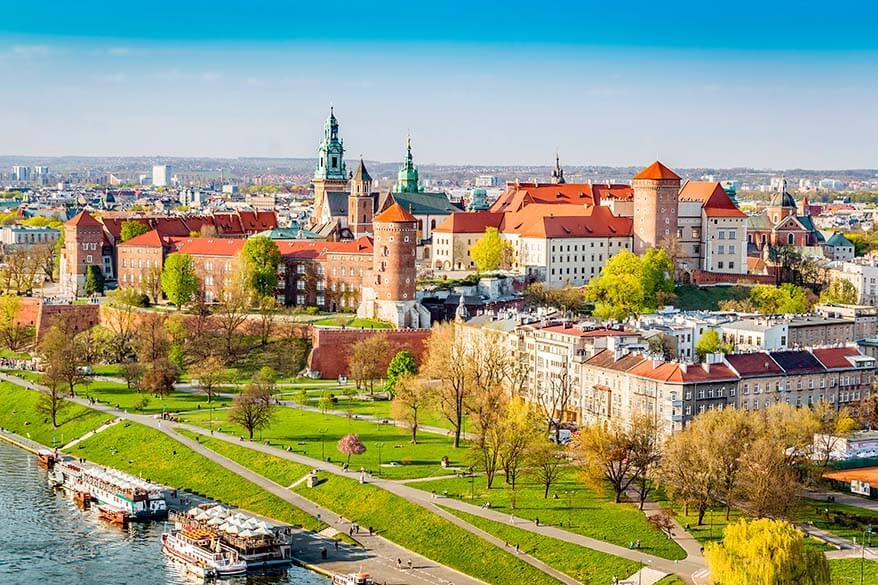
Kraków, Poland’s former royal capital, is a city rich in history and culture. The historic center, a UNESCO World Heritage Site, includes the stunning Wawel Castle, the bustling Main Market Square, and the historic Kazimierz district. Kraków is also home to the Jagiellonian University, one of the oldest universities in the world, and offers a vibrant arts and music scene.
Warsaw
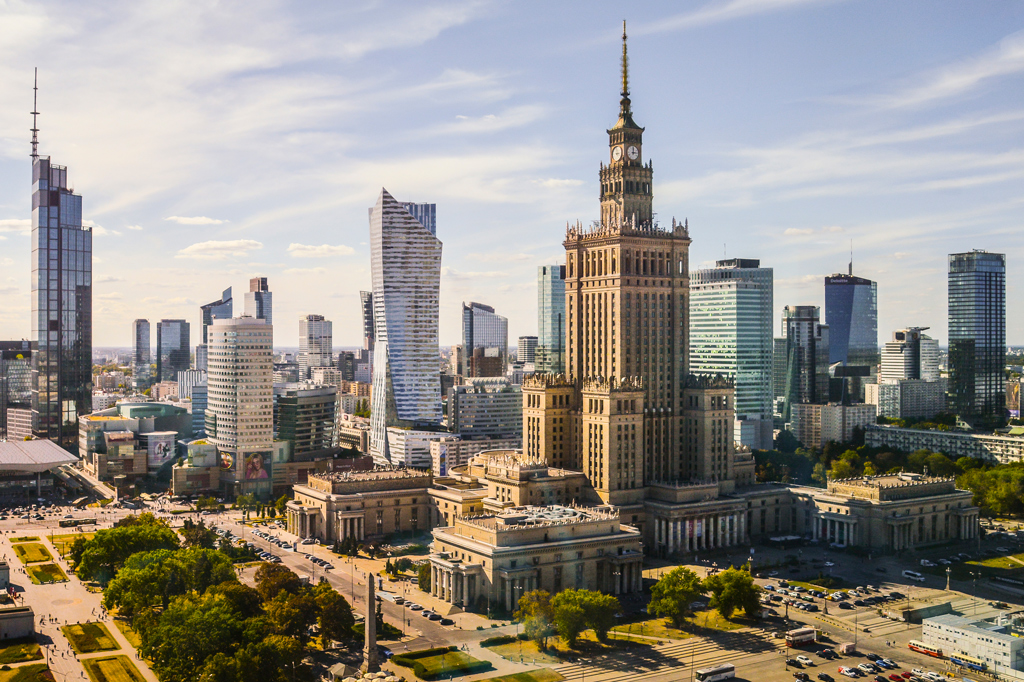
Warsaw, the capital city of Poland, is a vibrant metropolis known for its mix of modern skyscrapers and historical architecture. The reconstructed Old Town, another UNESCO World Heritage Site, features the Royal Castle, St. John’s Cathedral, and the picturesque Market Square. The city also boasts numerous museums, including the Warsaw Uprising Museum and the POLIN Museum of the History of Polish Jews.
Wrocław
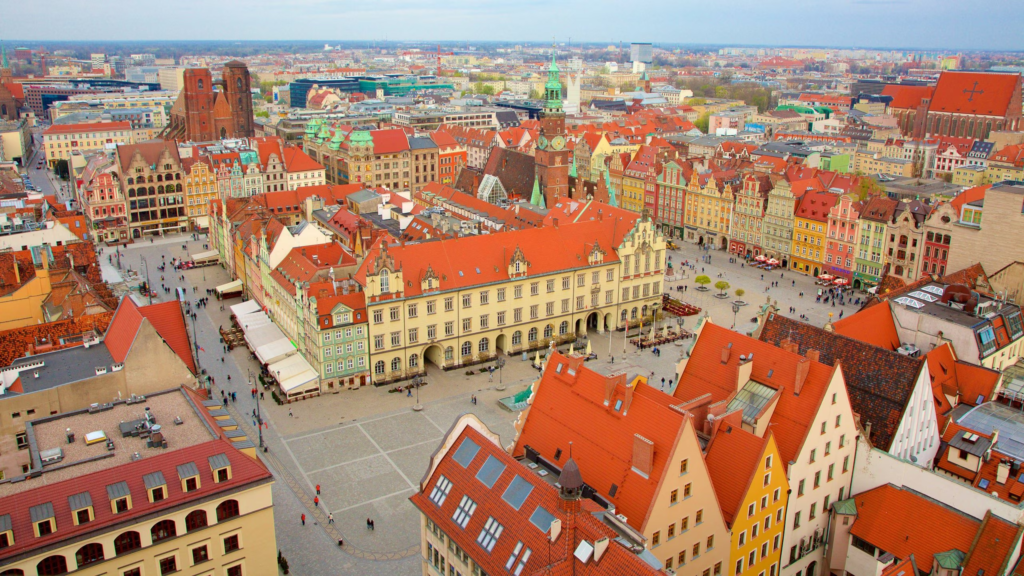
Wrocław, located on the Oder River, is known for its beautiful bridges, colorful townhouses, and vibrant cultural scene. The city’s Old Town is home to the stunning Wrocław Cathedral, the Market Square, and the Centennial Hall, a UNESCO World Heritage Site. Wrocław is also famous for its numerous dwarfs, small bronze statues scattered throughout the city.
Gdańsk
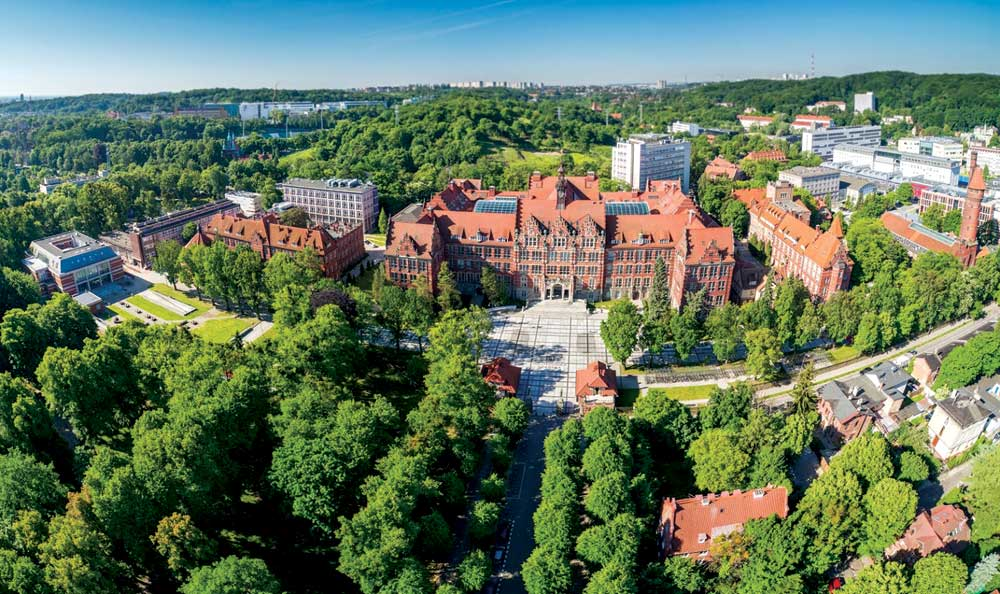
Gdańsk, a historic port city on the Baltic Sea, played a significant role in the Hanseatic League and the Solidarity movement. The city’s picturesque Old Town features the Gothic-style St. Mary’s Church, the medieval Crane, and the beautiful Neptune Fountain. Gdańsk’s maritime heritage is celebrated at the National Maritime Museum and the European Solidarity Centre.
Zakopane
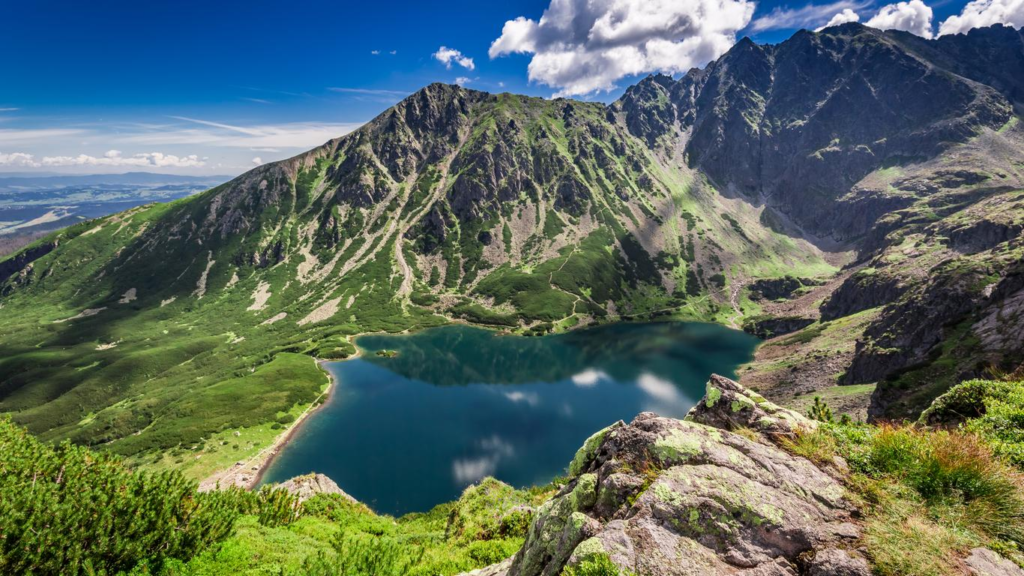
Zakopane, nestled at the foot of the Tatra Mountains, is Poland’s premier destination for winter sports and mountain tourism. Known as the “Winter Capital of Poland,” Zakopane offers stunning mountain scenery, traditional wooden architecture, and a vibrant local culture. Visitors can enjoy skiing, hiking, and exploring the charming Krupówki Street.
Poznań
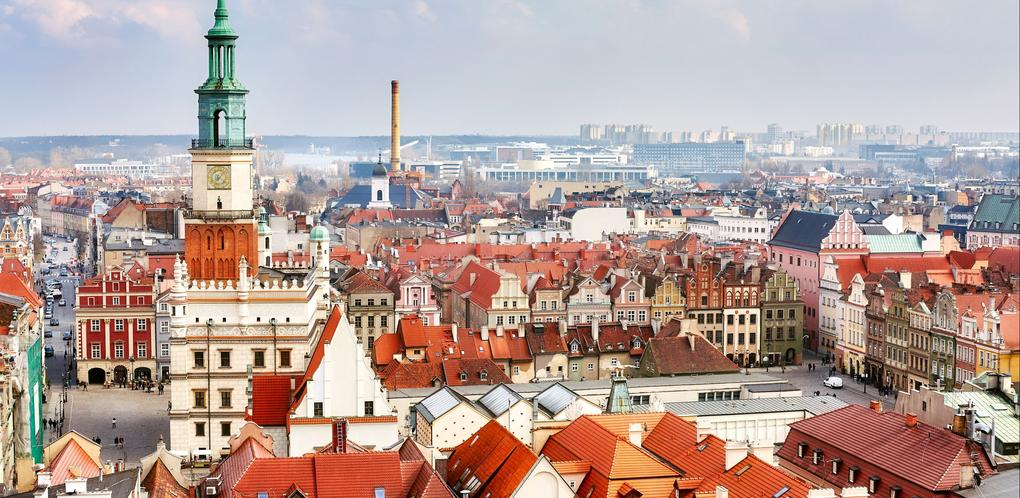
Poznań, one of Poland’s oldest cities, is renowned for its Renaissance-style Town Hall and the colorful facades of the Old Market Square. The city is also a major cultural and academic center, home to numerous festivals, museums, and the historic Poznań Cathedral. The annual Poznań International Fair attracts visitors from around the world.
Toruń

Toruń, the birthplace of astronomer Nicolaus Copernicus, is famous for its well-preserved medieval architecture and gingerbread. The city’s Old Town, a UNESCO World Heritage Site, features the impressive Toruń Cathedral, the Copernicus House Museum, and the historic Teutonic Castle. Toruń’s charming streets and vibrant cultural scene make it a must-visit destination.
Lublin
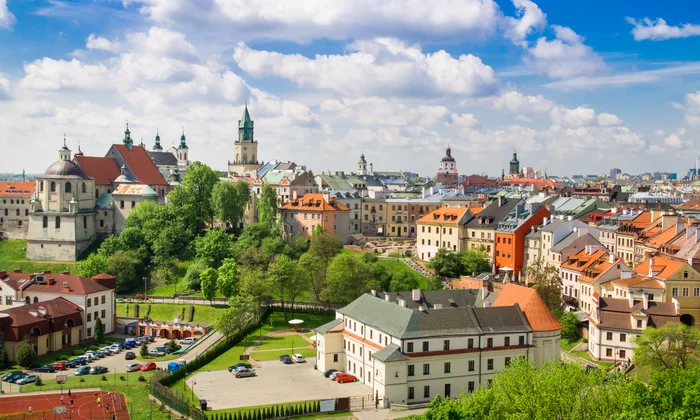
Lublin, located in eastern Poland, is known for its rich history and cultural diversity. The city’s Old Town is home to the Lublin Castle, the Gothic-style Lublin Cathedral, and the historic Grodzka Gate. Lublin also hosts numerous cultural events, including the Jagiellonian Fair and the Carnaval Sztukmistrzów festival.
Białowieża Forest

The Białowieża Forest, a UNESCO World Heritage Site, is one of the last and largest remaining parts of the primeval forest that once covered much of Europe. Located on the border between Poland and Belarus, the forest is home to a diverse range of flora and fauna, including the European bison. Visitors can explore the forest through guided tours and hiking trails.
Malbork Castle
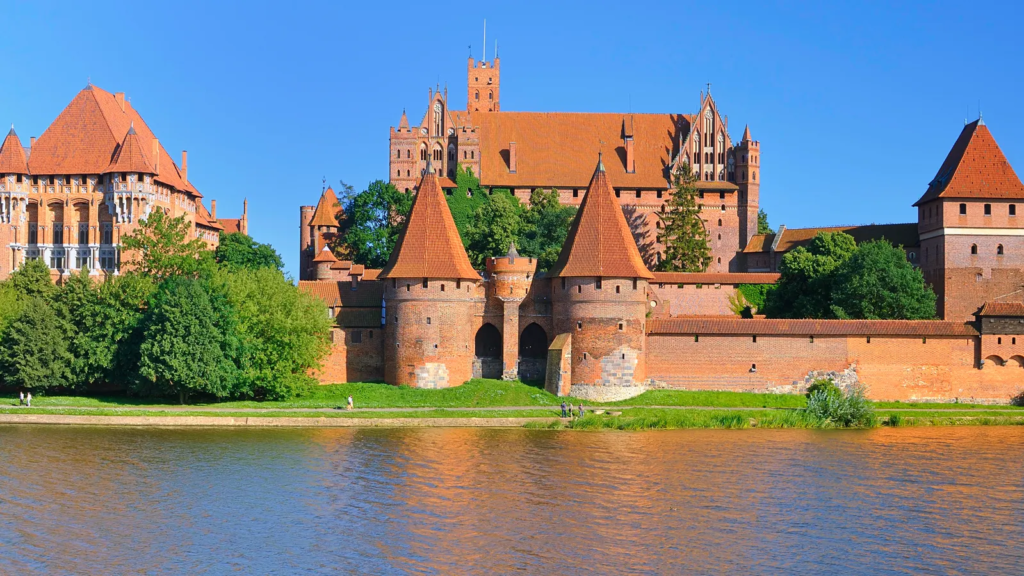
Malbork Castle, the largest brick castle in the world, is a stunning example of medieval architecture and a UNESCO World Heritage Site. Built by the Teutonic Knights in the 13th century, the castle complex includes the High Castle, the Middle Castle, and the Grand Master’s Palace. Malbork Castle offers a fascinating glimpse into the history of the Teutonic Order and medieval Europe.
Culture
The official language of Poland is Polish, a Slavic language with a rich literary tradition. Polish is spoken by the vast majority of the population, and the country takes great pride in its linguistic heritage. While Polish is the primary language, English is widely taught and spoken, especially among the younger generation and in major cities. Additionally, regional languages and dialects, such as Kashubian and Silesian, are recognized and preserved as part of Poland’s cultural diversity.
Polish lifestyle is characterized by a strong sense of community, family values, and hospitality. Poles are known for their warmth and friendliness, often extending generous hospitality to guests. Traditional Polish cuisine plays a significant role in daily life, with dishes such as pierogi (dumplings), bigos (hunter’s stew), and żurek (sour rye soup) being staples. Festivals, family gatherings, and communal events are integral to Polish life, reflecting the importance of social bonds and cultural traditions.
Poland is rich in traditions and customs that have been passed down through generations. One of the most cherished traditions is the celebration of Christmas and Easter, which are marked by elaborate rituals, feasts, and family gatherings. Christmas Eve, known as Wigilia, includes a festive meal with twelve dishes and the sharing of the opłatek (wafer). Easter is celebrated with the blessing of baskets filled with food and the decoration of pisanki (painted eggs). Other notable customs include the celebration of Name Days, harvest festivals, and the vibrant folk art and music that vary by region.
Festivals
Poland hosts a wide array of festivals throughout the year, celebrating everything from religious holidays to cultural events. One of the most significant festivals is All Saints’ Day on November 1st, when Poles honor their deceased loved ones by lighting candles and visiting cemeteries.
The Wianki Festival in Kraków celebrates the summer solstice with music, dancing, and the floating of wreaths on the Vistula River. The Open’er Festival in Gdynia is one of Poland’s largest music festivals, attracting international artists and music enthusiasts. Additionally, the Pierogi Festival in Kraków celebrates Poland’s beloved dumpling with various fillings and cooking styles.
Economy
Poland’s economy is one of the most dynamic in Europe, characterized by steady growth, a robust industrial base, and a diverse range of economic activities. Key sectors include manufacturing, agriculture, energy, and services. Poland is a major producer of coal, copper, and silver, and has a well-developed automotive and machinery industry.
The country has also become a significant player in the IT and technology sectors, with numerous startups and tech companies contributing to its economic landscape. Poland’s membership in the European Union has facilitated trade and investment, further bolstering its economic stability and growth.
Tourism
Poland’s rich cultural heritage, diverse landscapes, and historic cities make it a popular destination for tourists from around the world. Visitors are drawn to the country’s vibrant cities, such as Kraków, Warsaw, and Gdańsk, each offering a unique blend of historical and modern attractions. Poland’s
natural beauty, from the Tatra Mountains to the Baltic coast, provides ample opportunities for outdoor activities and adventure. Cultural events, traditional festivals, and culinary delights add to the allure of Poland as a travel destination. With a well-developed infrastructure and a welcoming atmosphere, Poland continues to attract a growing number of tourists each year.
Top Eight Most Famous Food of Poland
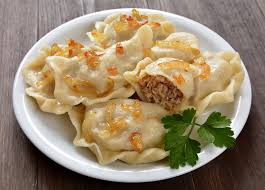




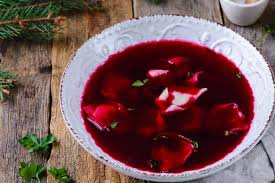

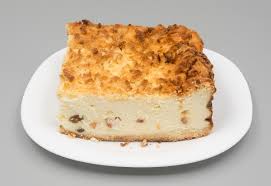
Interesting Facts About Poland
- Poland is home to 16 UNESCO World Heritage Sites.
- The Jagiellonian University in Kraków is one of the oldest universities in the world, founded in 1364.
- Marie Curie, the first woman to win a Nobel Prize, was born in Warsaw.
- The Wieliczka Salt Mine, one of the world’s oldest operating salt mines, is a popular tourist attraction.
- Poland has one of the largest populations of European bison, the heaviest surviving wild land animal in Europe.
- The Polish language has 32 letters in its alphabet.
- The Białowieża Forest is home to the last remaining primeval forest in Europe.
- Poland’s Constitution of May 3, 1791, was the first modern constitution in Europe.
- Poland has over 1,300 lakes, with the Masurian Lake District being a popular destination for water sports.
- The longest river in Poland, the Vistula, stretches over 1,047 kilometers.
Future Perspective
Poland’s future is marked by its continued integration into the global economy, advancements in technology and innovation, and a commitment to sustainable development. The country aims to strengthen its position as a regional leader in Central Europe, leveraging its strategic location and robust economic growth.
Investments in infrastructure, education, and renewable energy are key priorities, ensuring a prosperous and sustainable future for Poland. Additionally, Poland’s rich cultural heritage and natural beauty will continue to attract tourists and foster cultural exchange.
Conclusion
Poland, with its rich history, diverse landscapes, and vibrant culture, offers a unique and compelling destination for travelers and historians alike. From the medieval streets of Kraków to the modern skyline of Warsaw, and from the serene forests of Białowieża to the bustling markets of Poznań, Poland’s blend of tradition and modernity is truly captivating. As the country continues to grow and evolve, it remains a beacon of resilience, creativity, and cultural richness in the heart of Europe.
let’s enjoy few years on earth with peace and happiness….✍🏼🙏

